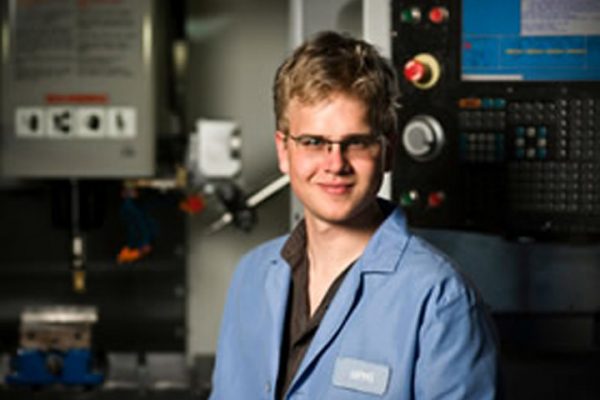
“I realized that the use of smart materials in robotics is an underdeveloped field.”
You could think of rising senior Duncan Haldane as a time traveler.
He crewed on a replica of a 4,000-year-old Egyptian sailing vessel for an archaeological cruise directed by his mother, Dr. Cheryl Ward, former Florida State University professor and renowned maritime archaeologist.
He has been a volunteer for Florida State’s Master Craftsman Program, the university’s unique version of a Renaissance artisans’ studio. And, as a mechanical engineering student, he works with cutting-edge 21st-century technology.
“My freshman year, I started volunteering at the Master Craftsman Program. I gained experience with traditional and high-tech methods of fabrication,” said Duncan.
Bob Bischoff, director of the Master Craftsman Program, was impressed by Duncan’s work. “(He) is an example of what can happen when students of exceptional ability are encouraged to use their talents for problems involved in creating real solutions,” said Bischoff.
“He was able to put together aesthetics, function and process … Duncan stands out in a group of very talented students as one who will succeed at whatever he chooses,” said Bischoff.
For his part, Duncan says the experience with the Master Craftsman Program prepared him for a summer 2009 internship at Florida State’s High Performance Materials Institute. “I have completed both individual and collaborative research projects there. … I am still cooperating with them on several projects.”
The High Performance Materials Institute researches and develops composite materials and systems. A example of the work being done at the HPMI is its research into the practical applications of buckypaper, a very thin film that is 10 times lighter than steel — but 250 times stronger, with many other extraordinary properties.
“My work at HPMI has led to further development of new composite-fabrication methods and a paper published in the Society for Advancement of Material and Process Engineering journal,” said Duncan.
He has a 3.9 grade-point average, won HPMI’s Most Creative Project award in 2009 and was nominated for a 2010 Goldwater Scholarship.
“I started working at STRIDe (Scansorial and Terrestrial Robotics and Integrated Design Laboratory) in April 2010. … I was very interested in smart materials. I later realized that the use of smart materials in robotics is an underdeveloped field,” said Duncan.
With the knowledge he acquired at HPMI, he came up with a project appropriate for his work at the STRIDe lab. “My Honors thesis is about the use of shape-memory polymers to create a variable-stiffness running leg for the RHex robot,” said Duncan. RHex is a six-legged robot that can climb and run over any sort of terrain. “The idea is to have a leg that you can send an electric signal through and thereby change the stiffness,” which would increase the robot’s stability and capabilities.
After pursuing a graduate degree in mechanical engineering, Duncan plans to continue researching the applications of smart materials in modern robotics.
“Duncan is a remarkable student for a number of reasons, not the least of which is his ability to master both the analytical and the practical aspects of problem solving,” said Dr. Jonathan Clark, director of STRIDe.
“He has a rare ability to quickly grasp the underlying issues and theory behind a problem. He combines this with … an ability to understand how physical systems work, and the capability of working with his hands to fabricate innovative physical solutions to difficult design problems,” said Dr. Clark.
Duncan is a 2010 winner of an Undergraduate Research and Creative Activity Award, sponsored by the Office of National Fellowships. The award supports students conducting research or other creative activity over the summer. Duncan’s research will support his Honors thesis.
Dr. Clark is optimistic about the outcome. “Duncan’s Honors thesis has the potential to provide a novel and elegant solution to a difficult design problem. (It) may open the door to a number of innovative designs that will improve the performance and robustness of legged robots.”
By Zilpha Underwood




